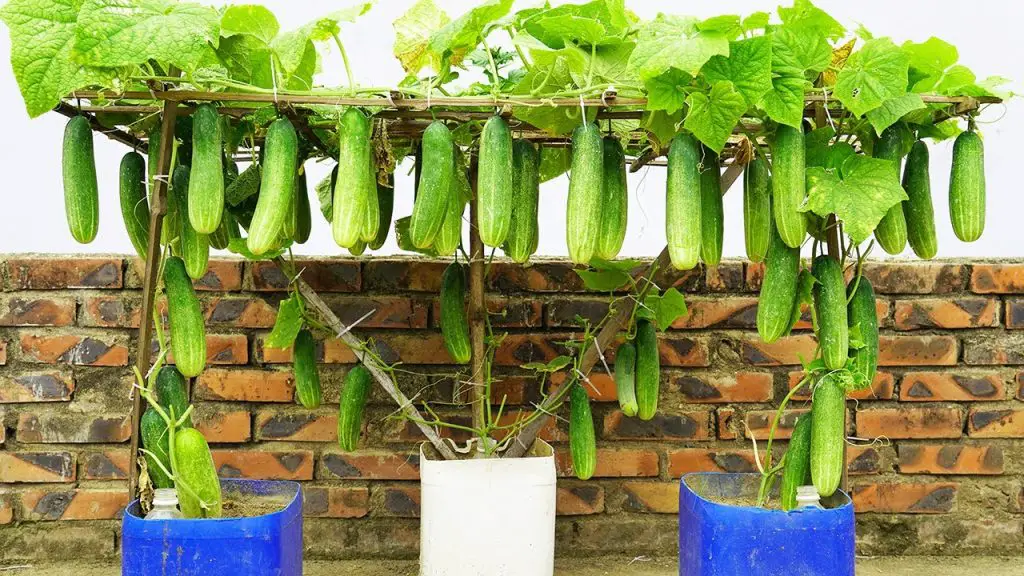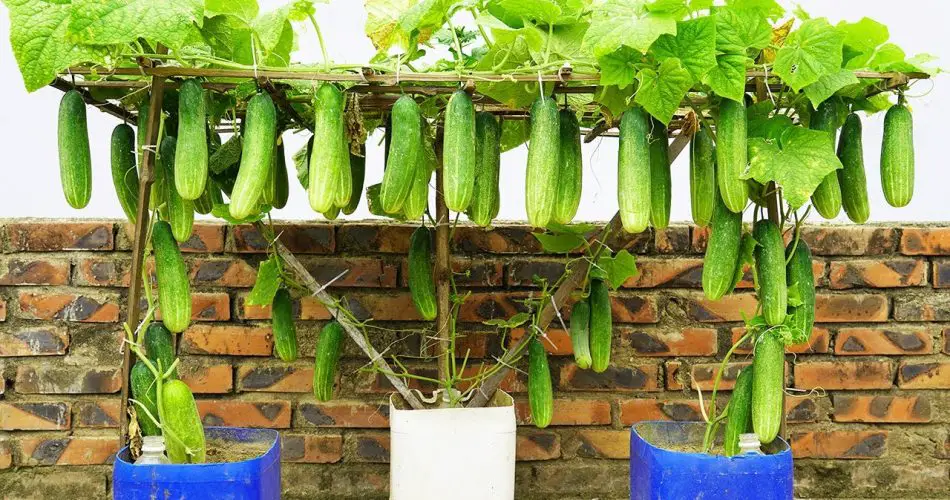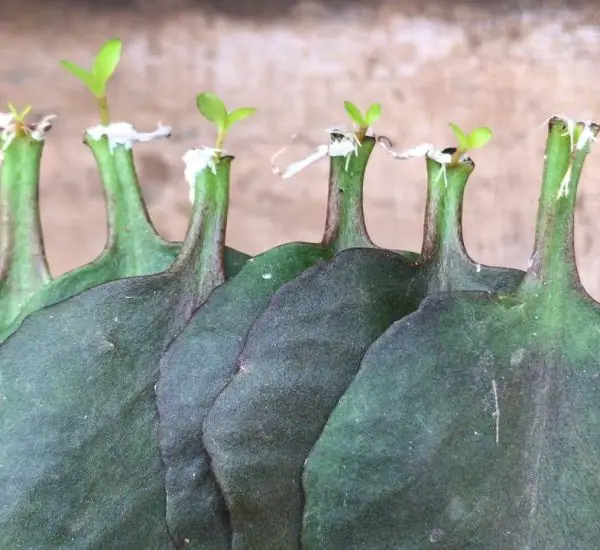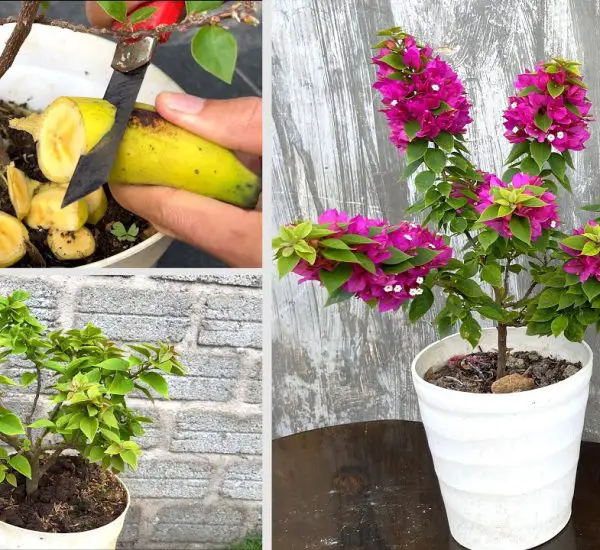Growing cucumbers can be a rewarding experience, especially when you discover a method that’s easy, cost-effective, and delivers an impressive harvest. After experimenting with various techniques, I found a simple approach to growing cucumbers that produces a lot of fruit. Whether you’re an experienced gardener or a beginner, this method will help you enjoy a bountiful crop of fresh cucumbers without much hassle. Here’s how you can do it too!
🌱 Why Cucumbers Are Great to Grow

Cucumbers are a versatile vegetable and perfect for many dishes, from salads to pickles. They thrive in warm weather and are known for their rapid growth, making them an excellent option for those looking to see quick results in their gardens. Additionally, cucumbers don’t require a lot of space, making them ideal for small gardens or containers.
But what’s the secret to growing cucumbers that produce a lot of fruit? Let me share the easy method I’ve tried and tested!
🌿 Step-by-Step Guide to Growing Cucumbers
1. Choose the Right Variety
Not all cucumber varieties are the same, so it’s important to select one that fits your growing conditions. There are two main types of cucumbers:
- Slicing Cucumbers: These are typically eaten fresh and have a mild taste, perfect for salads.
- Pickling Cucumbers: Smaller in size and ideal for making pickles.
For maximum yield, choose a disease-resistant variety that’s suited for your local climate. The more resistant the plant is to common cucumber diseases, the more productive it will be.
2. Prepare Your Growing Area
Whether you’re growing cucumbers in garden beds or containers, make sure your growing area has well-drained soil. Cucumbers are sensitive to soggy roots, so good drainage is key to preventing root rot.
- Soil Requirements: Cucumbers prefer slightly acidic soil with a pH of around 6.0 to 6.5. Enhance your soil by adding organic compost to improve fertility.
- Space: Cucumber plants need ample space to grow, so if you’re planting in a garden, space the plants 12-18 inches apart.
For container gardening, a large container (at least 12-15 inches deep) will give the roots plenty of room to grow.
3. Start From Seed or Seedlings
You can either start cucumbers from seeds or purchase young seedlings from a local nursery. Starting from seeds is cost-effective, but buying seedlings will give you a head start and result in a quicker harvest.
- Planting Seeds: If starting from seeds, sow them about 1 inch deep into the soil and water them well. Keep the soil moist until they begin to germinate.
- Planting Seedlings: If using seedlings, carefully transplant them into your garden or containers after the last frost. Space them well to allow the vines to spread.
4. Provide Support for the Vines
Cucumbers are vining plants that need support to grow efficiently. Training the vines on a trellis or vertical support helps the plants thrive by saving space and allowing for better air circulation.
- Vertical Gardening: Installing a trellis or garden netting will help the cucumber vines climb upward rather than sprawl on the ground. This not only saves space but also keeps the fruit clean and reduces the risk of diseases like powdery mildew.
- DIY Supports: You can make a simple trellis with bamboo poles, chicken wire, or even old wooden ladders. Be sure to tie the cucumber vines gently to the support as they grow.
5. Watering and Fertilizing
Cucumbers require consistent moisture to grow strong and healthy. However, you should avoid overwatering, as this can lead to root rot.
- Water Regularly: Water the plants deeply, especially during dry spells. Aim to keep the soil consistently moist but not soggy.
- Fertilize: Cucumbers are heavy feeders, so providing them with the right nutrients is essential for healthy growth and fruit production. Use a balanced fertilizer or one specifically designed for vegetables. Apply a liquid fertilizer every two weeks to promote growth and maximize yields.
6. Pruning and Managing Growth
To encourage better fruit production, it’s important to prune the plants regularly. By removing unnecessary leaves and side shoots, you allow the plant to focus its energy on producing more fruit.
- Prune the vines: Remove any yellowing leaves or excessive growth that might block sunlight from reaching the fruit.
- Pinch the tips: If the vines get too long, pinch back the growing tips to encourage more lateral growth and more flowers, which will eventually become fruit.
7. Harvesting Your Cucumbers
Cucumbers grow quickly, and you’ll want to harvest them when they’re young and tender for the best flavor. If you leave them on the vine too long, they can become bitter and overripe.
- Harvest Regularly: Check your cucumbers daily, and pick them when they reach the desired size. The skins should be firm and the color vibrant.
- Use scissors or pruners: For clean cuts, use scissors or garden pruners to avoid damaging the plant.
🌟 Tips for a Bountiful Harvest
- Mulch: Adding a layer of mulch around the base of the plant helps retain moisture and suppresses weeds, making it easier for the plant to grow.
- Companion Planting: Consider planting marigolds or basil near your cucumbers. These plants can help deter pests and improve overall plant health.
- Pest Management: Keep an eye out for common pests like aphids and cucumber beetles. Use natural pest control methods such as neem oil or insecticidal soap to manage these issues.
🌿 Conclusion: Easy and Rewarding Cucumbers at Home
By following these simple steps, you can grow cucumbers with ease and enjoy a high-yield harvest. This method not only saves space but also allows you to have fresh, homegrown cucumbers all season long. With the right care, your cucumbers will be bountiful, delicious, and easy to manage. Try this method, and you’ll be amazed at how much fruit you can produce without much effort.
Happy gardening and enjoy your fresh, crisp cucumbers! 🥒🌿



